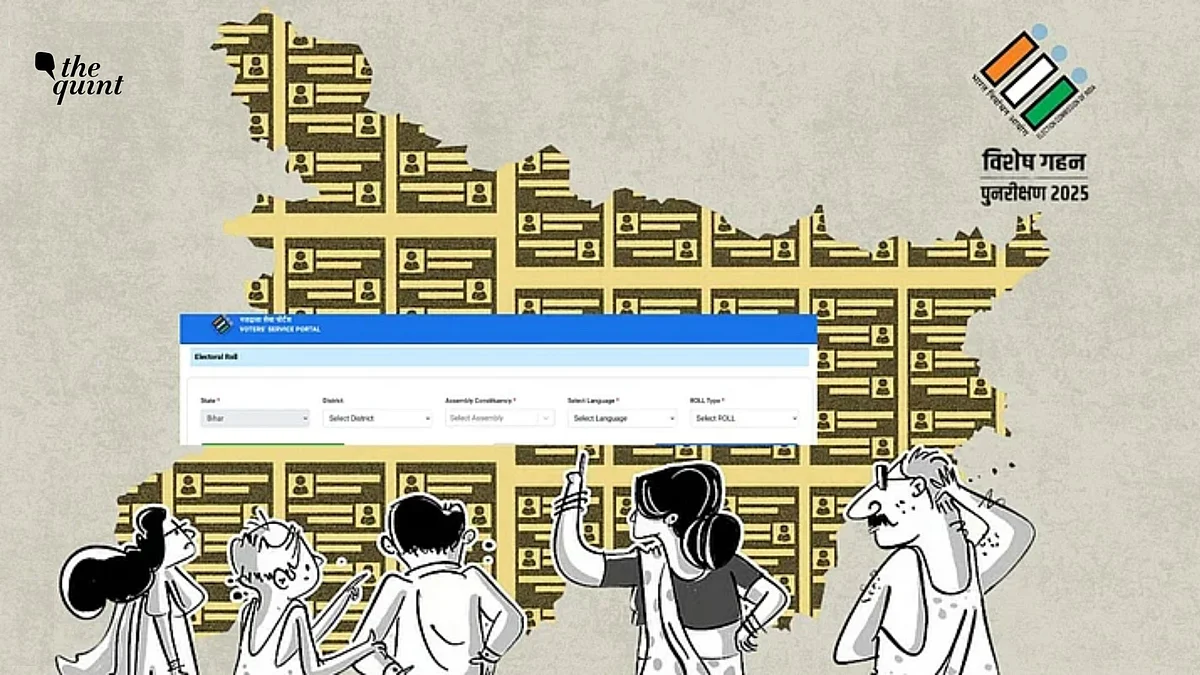
Bihar SIR Data: Lalu's District Hit Hard, 6% Drop in Nitish's Nalanda
In Bihar's SIR, Gopalganj saw the highest drop in voters at 15%, with two Seemanchal districts among the top three.

advertisement
A massive 65 lakh names have been scrubbed from Bihar’s voter rolls following a Special Intensive Revision, the draft data shows.
While Gopalganj tops the list with 15.1% of its voters excluded, followed by Seemanchal’s Purnia (12.08%) and Kishanganj (11.82%) - districts with significant Muslim populations. Meanwhile, Chief Minister Nitish Kumar’s home district Nalanda saw just 6% exclusions—among the lowest in the state.
Lalu Yadav’s home district is being seen as the most affected. Here's what the data shows:
Gopalganj the Most 'Affected'; 2 of the Top 3 Districts Are from Seemanchal
Following the Special Intensive Revision in Bihar, Gopalganj emerged as the most 'affected' district, with approximately 15.10 percent of its voters excluded from the draft list.
Next on the list are two districts from the Seemanchal region—Purnia and Kishanganj—where 12.08 percent and 11.82 percent of voters, respectively, have been left out.
Bihar: Due to the Special Intensive Revision, the districts with the highest changes in the voter list are Gopalganj, Purnia, Kishanganj, Madhubani, and Bhagalpur.
(The Quint/Avanish Kumar)
Sheikhpura, Nalanda Among the Least 'Affected' Districts in SIR
In terms of the least affected districts in the Special Intensive Revision, Sheikhpura recorded the lowest exclusion rate, with only 5 percent of voters left out of the draft list. It was followed by Arwal at 5.57 percent and then Nalanda, where 6 percent of voters were excluded. In Bihar’s capital, Patna, 7.84 percent of voters were not included in the draft list.
Bihar: In the Special Intensive Revision, the districts with the least changes in the voter list are Sheikhpura, Arwal, Nalanda, Kaimur, and Lakhisarai.
(The Quint/Avanish Kumar)
Lalu Prasad Yadav's home district is Gopalganj, while Nitish Kumar's is Nalanda.
When it comes to the home districts of Bihar’s two key political leaders—Chief Minister Nitish Kumar and RJD chief Lalu Prasad Yadav—the Special Intensive Revision (SIR) exercise has revealed a stark contrast.
Nitish Kumar hails from Nalanda, a district with seven Assembly seats. It ranks as the third least affected district in the state under SIR, with only 6 percent of voters excluded from the draft list.
Both leaders have historically strengthened their political presence and driven development initiatives in their respective home districts. Consequently, electoral contests in these areas are often dominated by candidates from the JD(U), RJD, or their allied coalitions, with their personal influence playing a significant role.
Statewide, the SIR exercise identified 22,34,501 voters as deceased. Another 36,28,210 voters were found to have migrated. Additionally, 7,01,364 voters had their names listed in more than one location and are set to be removed from the rolls to prevent duplication.
Translated by: Baibhabi Hazra
- Access to all paywalled content on site
- Ad-free experience across The Quint
- Early previews of our Special Projects
Published: undefined